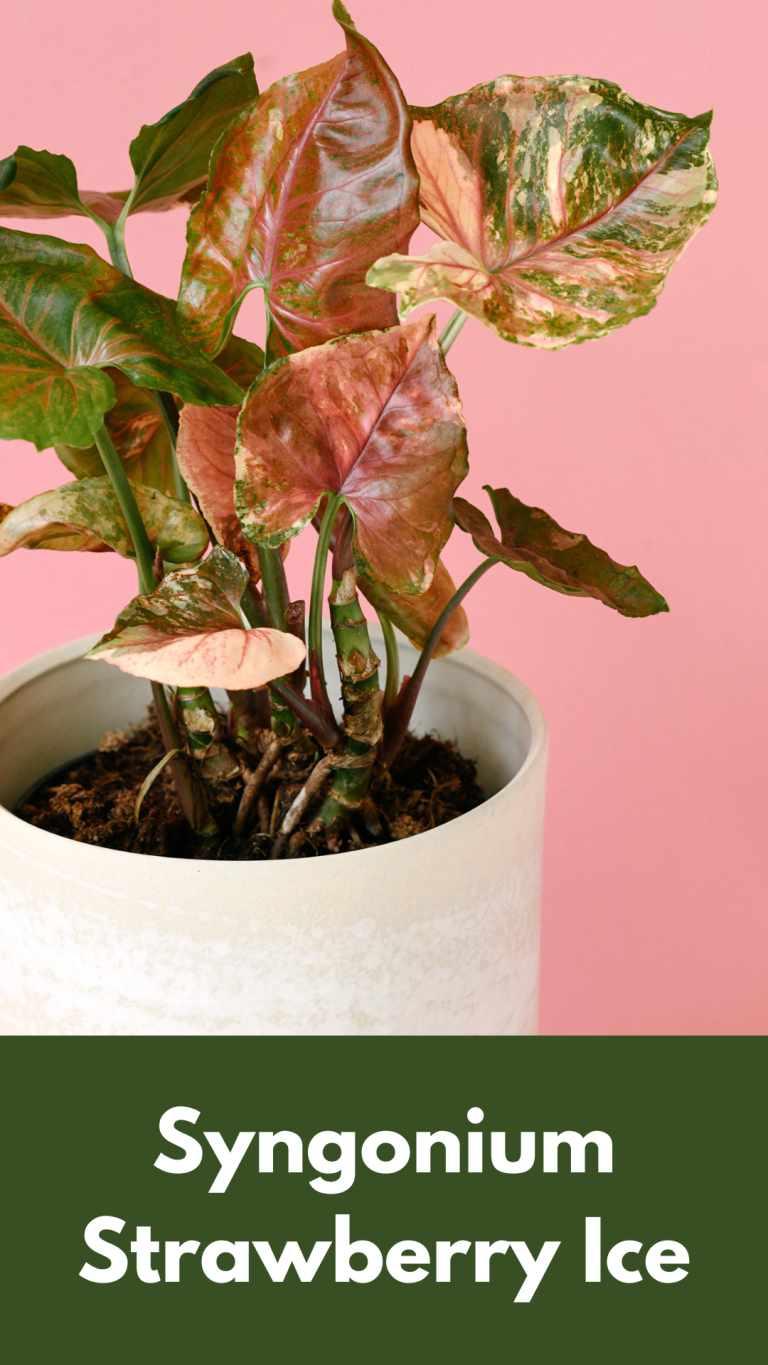Basement Plants
If you ever tried growing a plant in your basement but ended up killing it, it does not mean you have a black thumb in indoor gardening. It just means you are choosing the wrong plants for the wrong place.
If you want to grow plants in your basement, you need to find robust plants that can survive in low sunlight. To help you make a choice, we have listed 14 beautiful basement plants that are perfect to be grown in low sunlight.
Snake Plant

Sansevieria trifasciata, or Snake plant, is a hardy plant of the Dracaena genus. It is a medium-sized plant that can grow as tall as 1-4 feet in height when grown indoors.
Snake plant has thick, fleshy, dark-green leaves with yellow stripes. These leaves grow in an upright manner and have pointy ends. The unique foliage gives this plant a striking appearance.
Because it can survive in low sunlight, it is an excellent plant for basements. The only care it needs is regular watering. You should water it every 2 weeks in summers and once a month in winters.
Rex Begonia
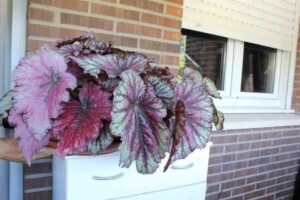
Rex Begonia is another unique foliage plant that is popular as a basement plant. It needs low to medium light to grow indoors, so it will be easy for this plant to acclimate to your basement.
Rex Begonia is a small-sized plant that grows 12 inches tall indoors. It has heart-shaped leaves with swirls. The colour of the leaves varies from green to pink to burgundy. The leaves of some Rex Begonia varieties also have metallic shade in them.
To keep this plant healthy and alive in your basement, water it every 2 to 3 weeks. Allow its soil to dry between waterings.
Related Posts:-
Chicken Gizzard Plant: Care And Propagation
Calathea Setosa: Plant Care, Common Name And Propagation
Agave Geminiflora: Plant Care, Propagation And Flowering
Philodendron Camposportoanum

Philodendron Camposportoanum is a tropical vine. It has small but appealing foliage. There are dark-green, heart-shaped leaves that have three-lobed blades with a velvety texture. Because it is a vining plant, you can grow it in hanging baskets. Its vines get 1-1.5 feet long.
Although Philodendrons thrive in bright, indirect sunlight, Philodendron Camposportoanum is quite tolerant of low light conditions. You can grow it in your basement using 12-14 hours of artificial lights.
For healthy growth, you should water this plant every 3 to 4 days in the growing season. It should be grown in a well-draining potting mix.
Spider Plant

Spider plant, or Chlorophytum comosum, is an adaptable houseplant that thrives in low or indirect sunlight. It is why Spider plants are a good option as an indoor basement plant.
It got its name due to its long, dangling leaves growing in a rosette pattern. Its light-green leaves have white stripes on their margins. The foliage produces pups when it matures, and so this plant is also easy to propagate.
If you grow a spider plant in your basement, you should water it only once every week. Plus, plant it in a well-draining potting mix so that the plant stays safe from getting root rot.
Cast Iron Plant

As its name suggests, cast iron plants are as robust as cast iron. It is a hard-to-kill perfect as a basement plant. All it needs is a source of low light and weekly watering. It is a low-maintenance plant that can tolerate a lot of neglect. So you can easily grow it in your home even if you are a beginner.
This plant has long, stiff grassy-green leaves with pointed ends. The stems grow out from a single base and then produce long leaves. This plant can grow as tall as 2 feet in height.
Parlor Palm

Parlor Palm is an evergreen plant with attractive foliage. It has long, light-green, feather-like fronds. It is a medium-sized plant that grows 4 feet long when grown indoors. Because it likes partial shade, it can grow perfectly well as a basement plant.
Plant soil takes more time to dry in the basement because of warmer temperatures. It is why you should water this plant lesser than its normal routine when grown in the basement. Weekly watering is enough for its proper growth.
Grape ivy
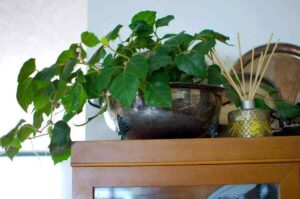
If you are fond of trailing plants, you need to grow this beautiful ivy in your basement. Grape Ivy is a charismatic plant with beautiful, fast-growing foliage. It has serrated, dark-green leaves that grow on long stems. In favorable conditions, this vine can grow 6 to 10 feet long. It is an excellent plant to grow in a hanging basket or trellis.
This plant thrives in low sunlight. To maintain its fast-growth rate, you should keep it in partial shade and fertilize it four times a year.
Moth Orchid

You may know orchids are high-maintenance plants that need bright sunlight. But Moth Orchid is a unique orchid that is a low-maintenance plant and prefers to grow in low sunlight. So, it will be a perfect fit for your shady basement.
Moth Orchid has long, arching, leathery leaves. It produces flowers in different colors ranging from purple, pink, yellow, and white. You may need artificial lights for this plant to bloom.
It is a small-sized beautiful plant that matures in a year. A mature Moth Orchid grows 8-12 inches tall. You should water this plant 1-2 times a week.
Prayer Plant

Prayer Plant is an attractive evergreen plant having a mature height of 4 to 5 feet. It is a popular houseplant because of its unusual leaves. Its beautiful leaves close at night and open at sunrise. Its tolerance to low light conditions makes it perfect for basement plants.
It has oval-shaped, dark-green leaves with light-green patches near its central vein. Its leaves have deep red veins and maroon undersides.
If you grow it in your basement, you should keep a close eye on its soil because basement plants are more prone to root rot. It would be best if you water it only once or twice a week when its topsoil gets dry.
Mint Plant

Mint is not only a beautiful plant to grow indoors, but it is also beneficial. It is a common herb used in culinary and medicinal recipes. The best thing about this useful herb is that it is easy to grow indoors. It is a small-sized plant that attains a mature height of 12 to 18 inches tall. You can grow it in a small pot and place it on a small coffee table or shelf.
Because this plant is tolerant of low light conditions, you can easily grow it in your basement. Low light or medium, indirect sunlight is sufficient for its growth. This plant needs a lot of water, so you should water it 1-2 times a day during spring and summer.
Lucky Bamboo

Dracaena sanderiana is a tropical plant from the Asparagaceae family. It is commonly known as Lucky Bamboo because the Chinese believe this plant brings prosperity and good luck when grown indoors.
It is attractive and low-maintenance, and both these features make it an excellent houseplant. This plant can grow perfectly well in a basement. The only thing affected by low light is the plant’s size. It grows 5 to 8 feet in bright, indirect sunlight and only 2 to 4 feet when placed in a shady basement.
Dumb Cane
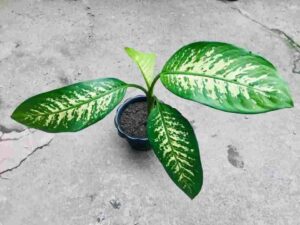
Dumb Cane is a popular houseplant because of its easy-to-follow care routine. It is a low-maintenance plant that requires minimum effort to grow indoors. Its high tolerance for low light conditions makes it perfect for basements or rooms with no windows. It needs to be watered once or twice a week.
This plant has dark-green ovate leaves with chartreuse to yellow spots near the central veins. This plant can grow 3 to 6 feet tall when grown in an ideal environment. If you grow in a basement, it will have a smaller size but perfectly healthy foliage otherwise.
Bird’s Nest Fern
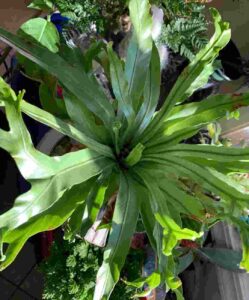
Bird’s Nest Fern is named this way because it has light-green crinkly fronds that grow in a compact rosette and look like a bird’s nest. It is an evergreen species that is grown indoors as an ornament plant. Its average mature size is 2 feet.
If you grow this plant in your basement, you should water it every 1-2 days because its soil will take more time to dry in a basement. It can grow in a basement, but you should keep it under artificial lights if you want its leaves to be more crinkly.
-
Spineless Yucca

This is the last but not the least basement plant in this list. Spineless Yucca is an interesting plant with a woody stem and yellow-green, sword-like, arching leaves. It can be grown outdoors as well as indoors because this plant has a wide spectrum of tolerance for light exposure. It can grow in a garden with full sunshine or a basement with no windows. But there is a major size difference in both places. It grows up to 5 feet long when grown indoors.
It is a hardy plant that does not need much attention. You should water it only when 50% of its soil gets dry. Water it only once a week in summer and once a fortnight in winter. Thus, This is the list of 14 amazing Basement Plants Requiring Low Sunlight.


